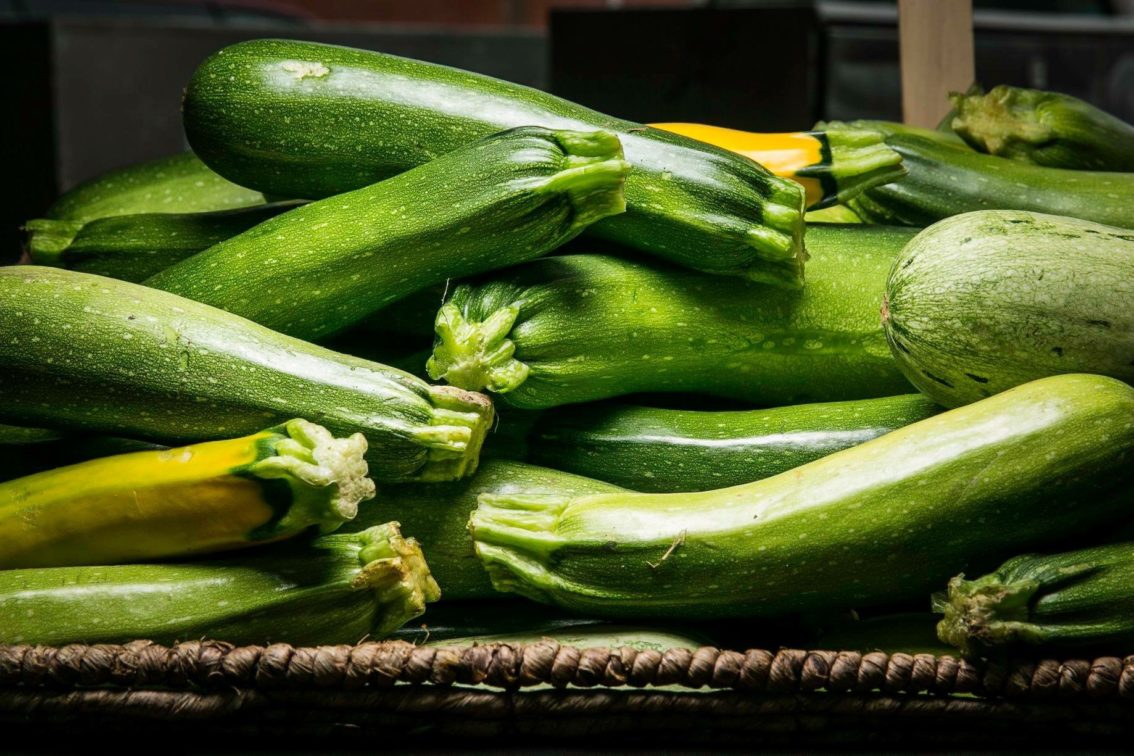For the 5th week of the CSA main season, members with Basic shares will be able to choose 5 items each week and members with Premium will be able to choose 8 items each week. The produce available for the Week 5 are:Green Beans, Spring Salad Mix, Carrot bunches with tops, Kale, Swiss Chard, Beet bunches, Cucumbers, small snacking type- a box is one whole item, Garlic, (Hardneck “Music”)- 3 is a whole item, can be mixed/ matched with other “Choose 3” items, Summer Squash (Zucchini, patty pan squash), 3 or a box is one item, Cherry Tomatoes and Full Sized Tomatoes (Premium shares can take two tomato items this week!) , Sweet Green Bell Peppers (still limited quantity), 3 is a whole item
Half Items (these items can be mixed or matched to equal a whole item): Cucumbers, English (each cucumber is a half-item), Eggplant, Kohlrabi bulb , Green Onions, Baby Fennel bunches, Bok Choy , Radishes, Head lettuce, Arugula, Red Onion boxes (half-item)
Not a member? You can still join here!
Green Beans (whole item): store in plastic bag in refrigerator. Basic cooking instructions: trim the stem end off and leave beans whole or snap into shorter pieces. Heat a pot of salted water to boiling, add beans, and boil 2 to 4 minutes, until almost tender- crisp. Drain beans very well (if you will be finishing the beans later, cool the bean beans to prevent further cooking, beans can also be frozen at this point). Heat butter and olive oil in a skillet (about 1 T each, can be increased or decreased to taste) over medium heat, add beans and salt and pepper to taste, and stir until tender, toward the end of cooking add 1 or 2 cloves garlic (chopped) if desired. Additions: crumbled bacon, toasted slivered almonds, stirred into the beans after cooking. Also, these Roasted Green Beans are great.
Salad mix (Whole Item): Store in plastic bag in the refrigerator. For salad inspiration, look at this: Mesclun Salad with goat cheese, or Chart of Salad Toppings Combinations.
Carrots (Whole Item): Storage suggestion: Separate the tops from the roots, and store separately in the fridge. The tops can be stored in a plastic bag. Place carrots in a containers with lid and cover completely in water. Keep container in the refrigerator, changing the water ever 4-5 days. Carrot top soup is a great way to use the tops (and this recipe uses some carrots also). In addition to just eating raw carrot sticks, carrots can also be roasted, as in this wonderful Roasted Cumin-Lime Carrots recipe.
Kale (Whole Item): store in plastic bag in refrigerator. Serving suggestions: Add to smoothies, Fall Kale salad , Cookie+ Kate’s Kale Salad with an amazing dressing, Zuppa Tuscana soup (I usually add a can of tomatoes to this soup and sometimes kidney beans), Kale Pesto (this recipe is served with pasta and roasted butternut squash) and Kale and Butternut squash frittata. To preserve: wash kale, cut off the stems, blanch in boiling water for 30 seconds, then cool in an ice bath, drain well and freeze. Frozen kale can be used in soups, added to casseroles, pasta dishes, or anything that uses cooked kale.
Swiss Chard (Whole Item): Store in plastic bag in the refrigerator. The swiss chard leaves have a very mild flavor similar to spinach. Both the stem and the leaves can be eaten and I usually use both together; chop the stems like you would celery and begin cooking the stems before adding the greens. This is a basic swiss chard recipe: Swiss Chard with Balsamic Vinegar. Our family really likes this Swiss Chard, Sausage, White bean casserole ( I use the stems and leaves of the chard). Swiss Chard is a great addition to pasta in this: Rigatoni with Swiss chard and Italian Sausage dish. This Swiss Chard and Ricotta Crostata is a wonderful recipe, and one of my all-time favorites. Swiss chard leaves can be used just like spinach in my Crustless Spinach Quiche recipe. Swiss chard can also be used in curry, as in these: Saag Paneer (I have used a bunch of swiss chard in place of spinach in this recipe; I washed, then coarsely chopped the chard stems and leaves, and then processed the swiss chard while raw in a food processor) and Curried Lentils and Sweet Potatoes.
Summer squash: patty pan and zucchini ( 3 squash or a box will count as one item): store in plastic bag in refrigerator. Yellow squash nearly interchangeable with zucchini and is great raw or sautéed, grilled, or baked into zucchini bread (my kids favorite way to eat zucchini!). Raw zucchini/ squash makes a fresh, flavorful salad as in this: Summer Squash Salad with Lemon Citronette. Zucchini (sliced and broiled or pan fried) can take the place of pasta in lasagna. If you want more ideas, you can try Baked Zucchini Fries, Zucchini Fritters or Chocolate Zucchini Bread or these main dishes Baked Penne with Roasted Vegetables (this is a great recipe to use a lot of vegetables, including zucchini, yellow squash, eggplant, peppers, onions and garlic), Cheesy Zucchini Casserole (which we make with shredded sharp cheddar, instead of Velvetta). Here’s a couple other zucchini recipes, recommended by CSA members: Curried Zucchini Soup, Zucchini Tots, Sauteed Zucchini with Cherry Tomatoes (don’t overcook the zucchini!), and Zucchini Chocolate Rum Cake. To preserve: Zucchini or Yellow squash can be shredded and frozen to use in Zucchini bread recipes.
Cucumbers : store in plastic bag in refrigerator (our cucumbers are not waxed, so will lose moisture and become rubbery if not wrapped). Recipe Ideas: Cucumber infused Water, Smoothies with Cucumbers, Cucumber Salads: Creamy Cucumber Salad with Greek Yogurt and Dill, Cucumber Salad with Garlic and Ginger and even Stir-fried Cucumbers! Pair with tomatoes in an Israeli Salad, Cucumber, Tomato, and Avocado Salad, Greek Salad and Panzanella Salad. Cucumbers are the base for the Mediterranean sauce, Tzatziki. Cold Cucumber Soup is also a refreshing way to use cucumbers.
Tomatoes (Whole Item): Ideally, store at room temperature in an open container.
Radishes (HALF Item): Store in plastic bag in refrigerator. Crisp radishes in ice water. Sliced radishes add great flavor to salads. You can also just eat them straight with butter and a sprinkle of salt. There are many variations of radish salads, here are a couple: Radish and Mint Salad , Smitten Kitchen’s chopped salad, and Radish, Cucumber and Orange Salad. Radishes are milder when roasted or cooked. I cut radishes in half and toss with a little olive oil, salt and pepper and roast at 425F until tender crisp (they can be roasted alongside sweet potatoes or carrots for a nice flavor and color combination).
Green Onions (HALF Item): Store in plastic bag in the refrigerator. Use in lots of Chinese/ other asian recipes (General Tso’s chicken and Korean beef are two Redfearn favorites) chicken salad, egg salad, salad dressing to name a few.
Cilantro (HALF Item): Wrap cilantro in a damp paper towel and then put it in a plastic bag in refrigerator. Alternatively, place in a jar of water (like cut flowers) loosely covered with a plastic bag in the refrigerator.
Kohlrabi (HALF Item): Both the leaves and the bulbous stem (the round part) are edible. The bulbous part can last for a couple weeks in the fridge, but the greens should be use within a couple days, both should be stored in plastic bags in the refrigerator . The bulb should be peeled by cutting off a thin slice on the top and bottom of the bulb and using a paring knife to cut the skin off the kohlrabi bulb.Here is a link with recipes using the kohlrabi bulb and greens, including one of our favorites, the kohlrabi patties: Kohlrabi Recipes. A simple preparation of kohlrabi is Butter- braised Kohlrabi: Peel kohlrabi, and thinly slice (1/8 to 1/4 inch thick) and cook in a skillet with butter and olive oil and salt and pepper, add about 1/2 cup of chicken broth, cover the skillet and cook, stirring occasionally, until tender. Optional: Cream can be added at the end. Eaten raw, kohlrabi is fresh, crisp, and the ideal ingredient for a summer slaw, such as this Kohlrabi and Carrot slaw or in this excellent Kohlrabi- Apple Salad!
Eggplant (Half-Choice Item):Store in plastic bag in the refrigerator, but use quickly, because eggplant doesn’t store well. Eggplant can be sauteed, grilled or roasted. Some wonderful eggplant recipes (that don’t require salting and draining the eggplant) are No-Fuss Eggplant Parmesan, Eggplant Parmesan Melts and Smitten Kitchen’s Eggplant Bruschetta (which has a Mediterranean style topping).Here’s a page with detailed instructions about eggplant preparation and recipes: Fine Cooking: How to cook Eggplant. It is great combined with zucchini and tomatoes (such as in Ratatouille). For eggplant recipes from Italy to China, check out these: Global Eggplant Recipes. Moussaka is a greek dish with eggplant. Here is a relatively simple recipe for Moussaka recommended by a CSA member (and also tried and deliciously approved by the Redfearn family). Some chefs suggest salting and draining the prepared (sliced, cubed, etc) eggplant for at least 20-30 minutes before cooking (this takes away any bitterness and also, helps the eggplant to absorb less oil during cooking), but I have gotten away from it the past year.
Garlic (Half Item):Store in a cool, dry, well ventilated area; in a bowl/ basket on your counter should be fine.
If you would like more recipe ideas, I have a pinterest board devoted to CSA vegetable recipes: http://www.pinterest.com/sheriredfearn/csa-veggies-recipes/

